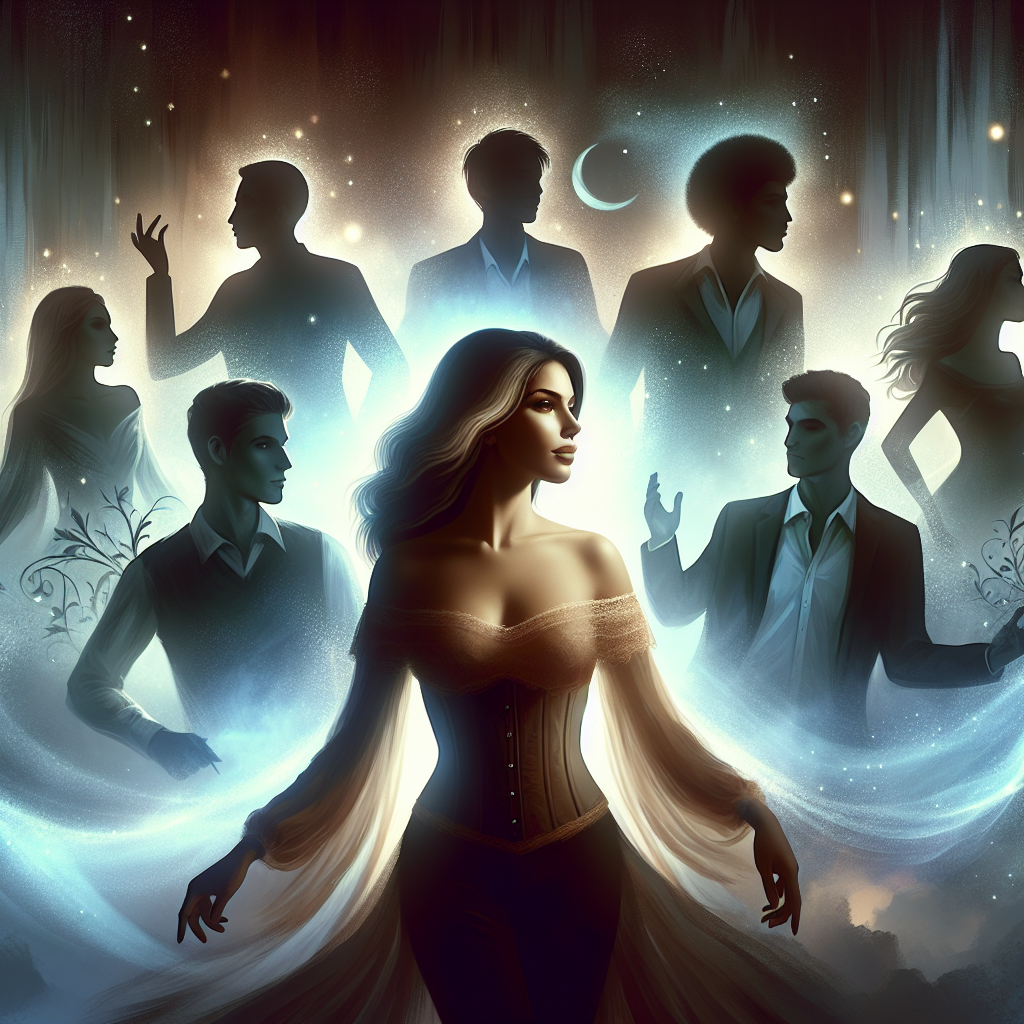The Complete Guide to Reverse Harem Romance: 8 Essential Elements That Define the Genre
In the evolving landscape of romance literature, few tropes have captured readers' imaginations quite like the reverse harem. This captivating genre flips traditional romantic conventions on their head, offering a refreshing take on love, desire, and relationship dynamics that resonates with modern audiences seeking more complex emotional narratives.
What Defines Reverse Harem Romance?
At its core, reverse harem romance features a single protagonist—typically a strong female character—who develops meaningful romantic relationships with multiple love interests simultaneously. Unlike traditional love triangles that force an agonizing choice, reverse harem celebrates the possibility of multiple connections, each bringing unique emotional fulfillment and personal growth.
This genre transcends simple wish fulfillment, delving deep into themes of self-discovery, empowerment, and the multifaceted nature of human connection. It challenges conventional relationship models while exploring how different partnerships can reveal various aspects of one's personality and desires.
The 8 Essential Features of Reverse Harem Romance
1. Multiple Devoted Love Interests
The foundation of any reverse harem lies in its cast of romantic partners. Rather than competing for attention, these characters each offer distinct emotional and physical connections with the protagonist. This abundance of romantic possibilities creates rich storytelling opportunities and allows readers to explore diverse relationship dynamics within a single narrative.
2. Freedom from Impossible Choices
Perhaps the most liberating aspect of reverse harem is the elimination of the dreaded "choose one" ultimatum. The protagonist doesn't face the traditional romantic dilemma of selecting a single partner. Instead, she embraces the possibility of loving multiple people in different ways, creating a more inclusive and emotionally satisfying resolution.
3. Diverse Personality Archetypes
Each love interest typically embodies distinct personality traits and romantic archetypes. You might encounter the brooding protector, the gentle intellectual, the charismatic rebel, or the mysterious enigma. This diversity ensures that different aspects of the protagonist's personality emerge through various relationships, creating a more complete character portrait.
4. Character Development Through Relationships
The multiple relationships serve as catalysts for profound personal growth. Each connection challenges the protagonist in unique ways, revealing hidden strengths, confronting personal fears, or exploring untapped desires. This multifaceted approach to character development creates richer, more dimensional storytelling.
5. Collaborative Rather Than Competitive Dynamics
While jealousy and tension may occasionally surface, successful reverse harems emphasize cooperation and mutual respect among all parties. The love interests often work together to support the protagonist's goals, creating a sense of found family and emotional security that enhances the romantic elements.
6. Escapist Fantasy Settings
Many reverse harem stories unfold in fantastical or supernatural worlds—from paranormal academies to mythical realms. These imaginative settings amplify the escapist appeal while providing logical frameworks for unconventional relationship structures that might seem improbable in contemporary realistic fiction.
7. Female Agency and Empowerment
The protagonist maintains control over her romantic destiny, making active choices about her relationships rather than being a passive recipient of male attention. This agency reflects modern values about female empowerment and sexual autonomy, making the genre particularly appealing to contemporary readers.
8. Emotional and Physical Balance
Each relationship contributes different emotional and physical elements, creating a well-rounded romantic experience. One partner might provide intellectual stimulation, another offers emotional security, while a third brings passionate intensity. This balance creates satisfying complexity that mirrors real-world relationship dynamics.
Historical and Cultural Foundations
Ancient Mythological Precedents
The reverse harem concept isn't entirely modern—it has deep roots in mythology and folklore across cultures:
Hindu Traditions: The stories of Krishna and his devoted gopis (milkmaids) present early examples of one central figure beloved by many, establishing precedents for multiple-devotee narratives.
Greek Mythology: Powerful goddesses like Artemis and Aphrodite commanded the loyalty and devotion of numerous followers, creating dynamics where divine feminine figures held central positions of reverence and desire.
Historical Polyandry: Certain societies, particularly in Tibet and parts of ancient India, practiced polyandry—marriages where one woman had multiple husbands—providing real-world examples of alternative relationship structures.
Literary Influences
Classical Literature: Works like "The Tale of Genji" from Japanese literature explored complex relationship webs, influencing how modern storytellers approach multiple romantic connections.
Imperial Courts: Historical accounts of powerful empresses surrounded by devoted male courtiers, advisors, and protectors provided templates for the modern reverse harem dynamic.
The Emotional Depth Behind the Fantasy
Meeting Diverse Emotional Needs
Reverse harem romance recognizes that human beings are complex creatures with varied emotional needs. Rather than expecting one person to fulfill every aspect of romantic and emotional satisfaction, these stories explore how different relationships can address different aspects of human connection:
- Emotional Security: One partner might provide stability and comfort
- Intellectual Stimulation: Another offers engaging conversation and mental challenges
- Physical Passion: A third brings intense romantic and physical connection
- Adventure and Growth: Yet another encourages personal development and new experiences
Exploring Identity Through Relationships
Each romantic connection serves as a mirror, reflecting different facets of the protagonist's personality. Through varied interactions, readers witness character growth that feels organic and multidimensional. This approach acknowledges that we often discover aspects of ourselves through our relationships with others.
Modern Appeal and Reader Connection
The rising popularity of reverse harem romance reflects broader cultural shifts toward more inclusive relationship models and greater female agency in romantic narratives. Readers are drawn to stories that:
- Celebrate female choice and autonomy
- Explore complex emotional landscapes
- Offer escapist fantasy with emotional depth
- Challenge traditional relationship expectations
- Provide diverse romantic and emotional satisfaction
Conclusion: Beyond Simple Fantasy
Reverse harem romance offers far more than simple wish fulfillment or fantasy escape. At its best, the genre provides thoughtful exploration of human connection, personal growth, and the complexity of love in all its forms. By embracing multiple relationships, these stories create space for nuanced character development and emotional depth that resonates with readers seeking more sophisticated romantic narratives.
Whether you're a longtime fan or curious newcomer, understanding these eight essential elements will enhance your appreciation for this evolving and increasingly popular genre. The reverse harem trope continues to push boundaries, challenge conventions, and offer readers new ways to explore the infinite possibilities of love and connection.
💝 Ready to Explore More Romance?
If you enjoyed this article about Romance writing, discover thousands of captivating love stories on our platform.
Download App







